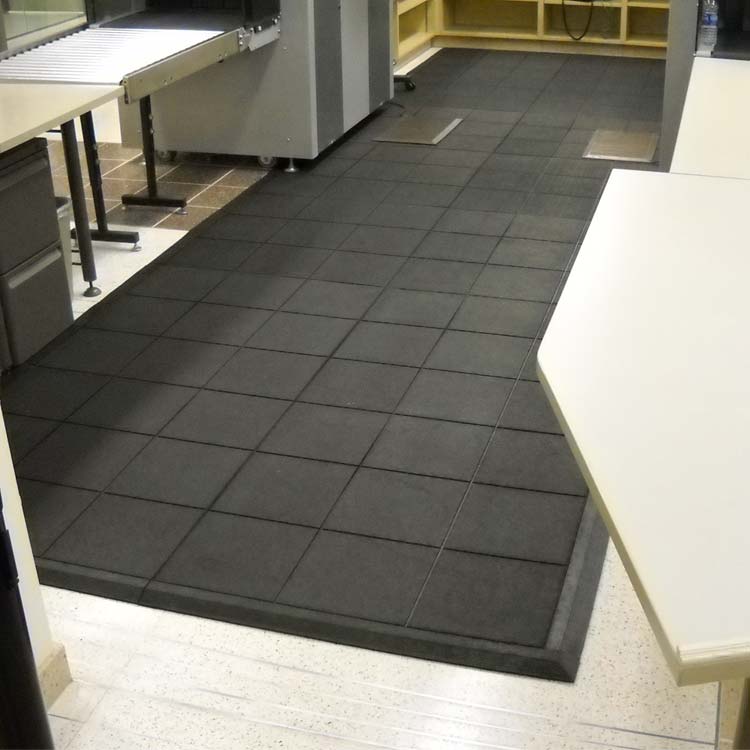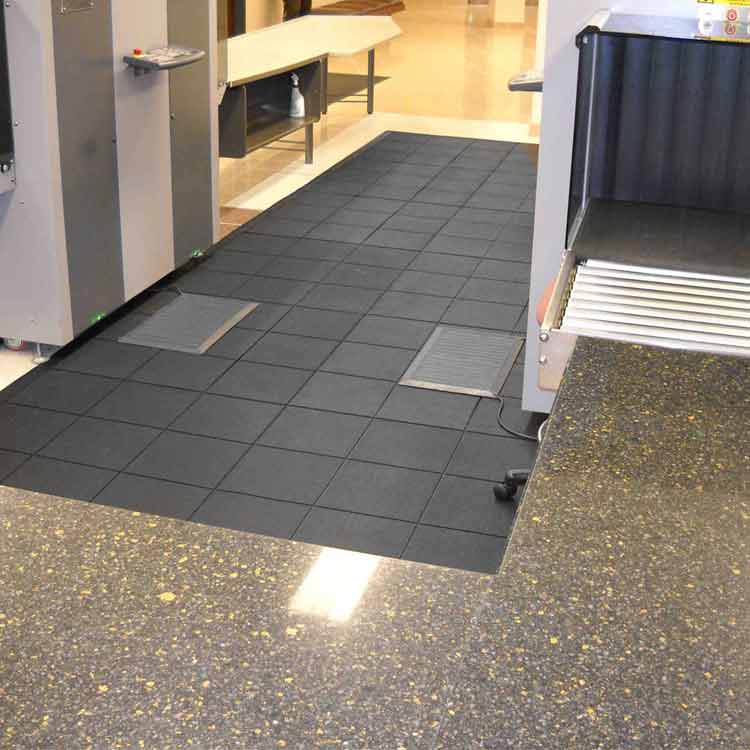 A basement can be a scary place where oversized spiders, rabid rodents, rotting zombies, and thirsty vampires dwell. Most basements, however, are used to store long-forgotten exercise equipment, sentimental knickknacks, and family heirlooms. Your basement usually ends up being the room in your house that perpetually collects junk and miscellany.
A basement can be a scary place where oversized spiders, rabid rodents, rotting zombies, and thirsty vampires dwell. Most basements, however, are used to store long-forgotten exercise equipment, sentimental knickknacks, and family heirlooms. Your basement usually ends up being the room in your house that perpetually collects junk and miscellany.
A basement doesn’t need to be either of those things. Breathe some life into that old cellar with a little Do-It-Yourself remodeling! There are many basement flooring choices for homes, but rubber flooring for basements can be the key element you’ve been missing. Follow these easy suggestions to turn your inactive basement into a playroom, home gym, or workshop.
First, clear your basement of all storage boxes, dirt, and mildew. Shove those sentimental knickknacks and heirlooms into the attic. Put your old gym equipment in the garage. Bust out the window cleaner and bleach and go to town on all the mold and mildew that has accumulated over the years. Basements are prone to dampness and flooding, rubber floors for basements are one of the greatest safeguards you can use. Rubber, which is naturally water and mold resistant, acts as a watertight layer between basement floors and harmful moisture.
While there are a number of basement flooring choices out there, rubber flooring is one of the easiest to install and maintain. Rubber flooring rolls and interlocking tiles offer quick and seamless installation that will save you time and money. Rubber flooring rolls can be ordered in custom-cut lengths which makes them incredibly easy to install. When you purchase rubber flooring for basements keep in mind the measurements of your specific area; once you have ordered rolls in the appropriate lengths installing them is easy! Simply cut the rubber flooring to the correct dimensions and secure them to your basement floor with double-sided tape. No glue, no professional installers, and no mess!
 Basement rubber flooring also comes in another Do-It-Yourself form that’s cheap, simple, and easy to use — interlocking rubber tiles! These puzzle-like rubber tiles are easy to connect and lay down over any basement floor. Simply slide the interlocking pieces together to connect the tiles and form a uniform surface. Then, cut the edges of the floor until they are flush with the walls and corners.
Basement rubber flooring also comes in another Do-It-Yourself form that’s cheap, simple, and easy to use — interlocking rubber tiles! These puzzle-like rubber tiles are easy to connect and lay down over any basement floor. Simply slide the interlocking pieces together to connect the tiles and form a uniform surface. Then, cut the edges of the floor until they are flush with the walls and corners.
Once your rubber basement floor is securely installed you can do anything. You may consider turning your basement into a home gym to shed a few pounds and get in shape. Rubber flooring will cushion your heavy fitness machinery, support your joints during high-impact workouts, and protect your equipment from harm. Or, if you want to turn that old basement into a playroom, install rubber basement flooring to protect your kids from scrapes and falls. Even if you’re a simple hobbyist with dreams of turning your basement into a workshop, a good rubber floor can take a beating from falling tools and heavy workbenches.
No matter what you do with it, you have many basement flooring choices. Affordable, water resistant, and easy to install rubber flooring for basements can open up a whole world of possibilities. Install tough rubber floors in your basement and turn it into a serviceable room in your house. You won’t regret it!